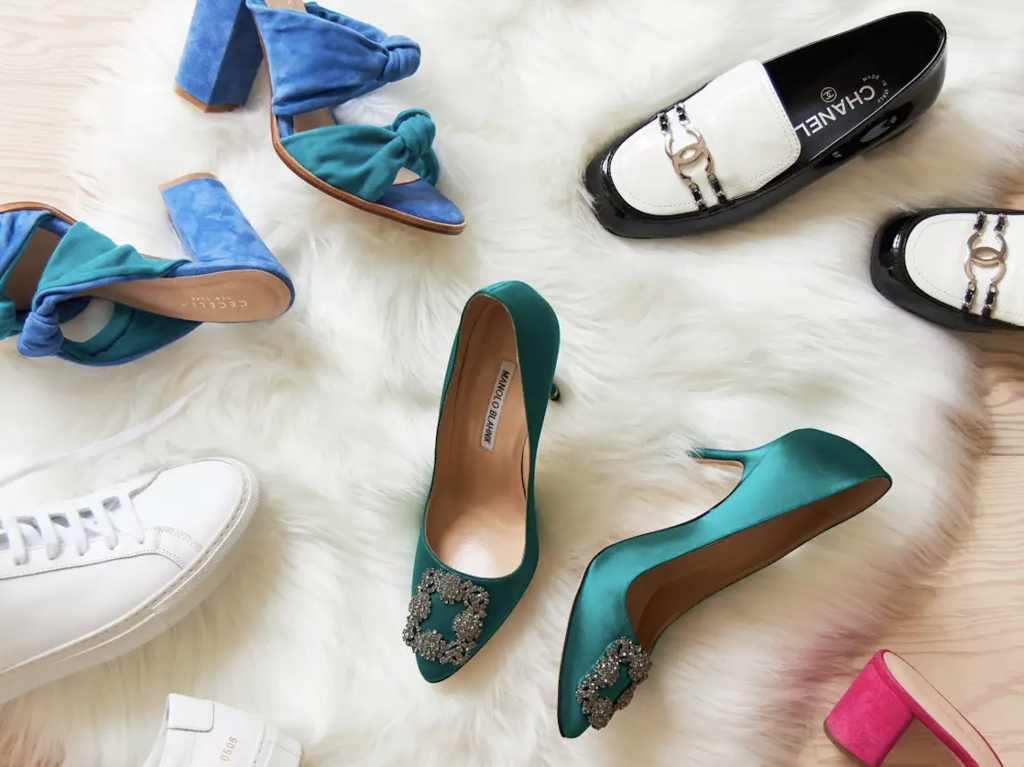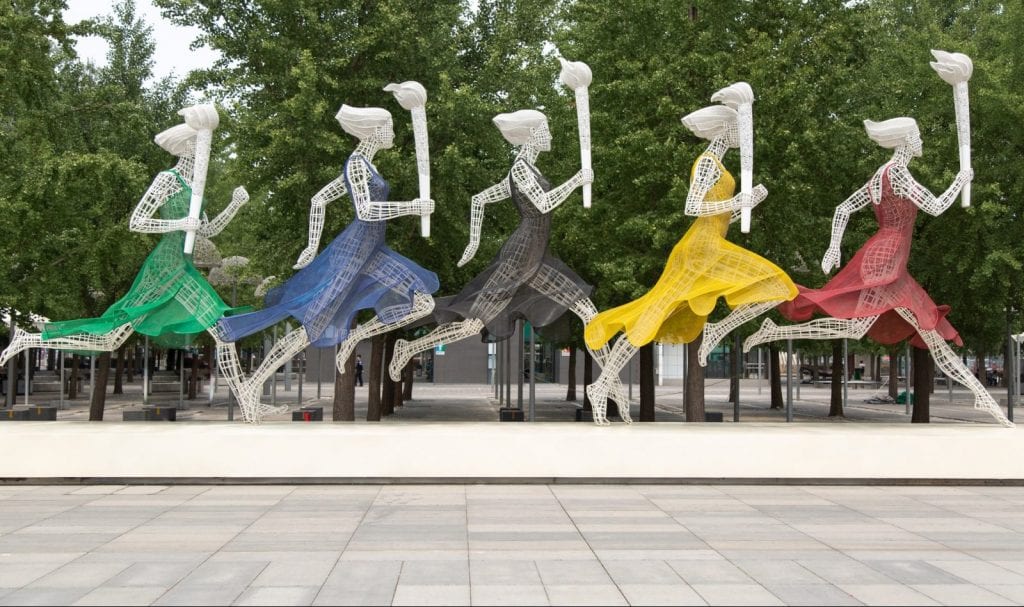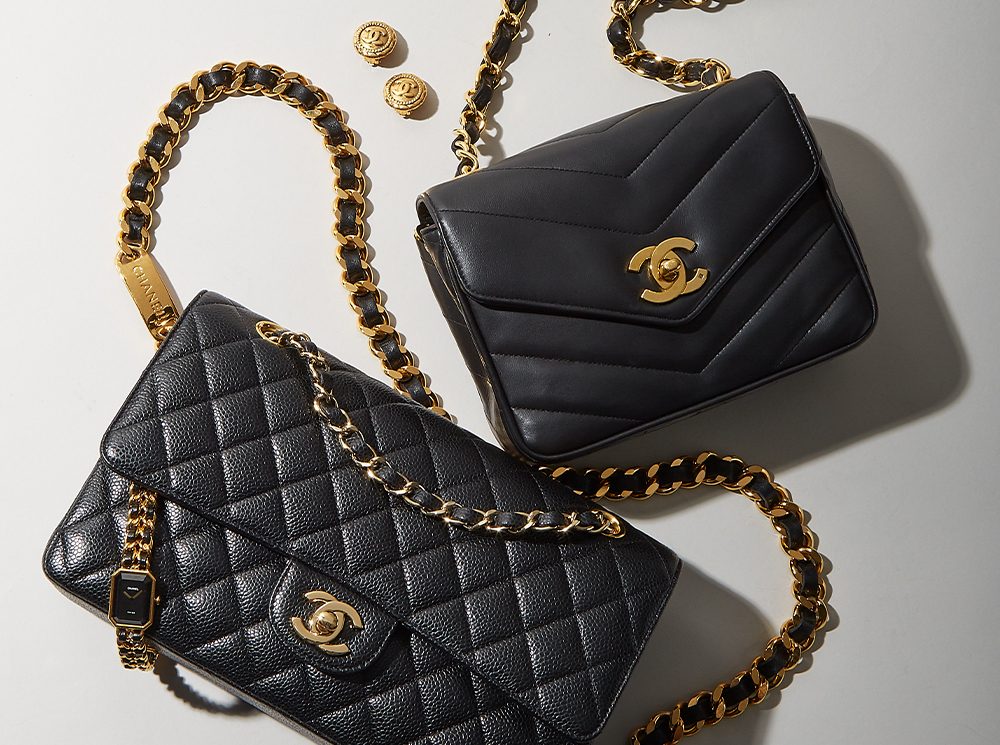The $36 billion secondhand market is projected to double in the next 5 years, reaching $77 billion, ThredUp states in its 2021 Resale Report. The Oakland, California-based resale company asserts in its newly-released annual study – which surveyed 3,500 American adults between March and April 2021 – that “as it becomes easier to sell clothes online, more consumers are purging their closets.” 36.2 million customers sold pre-owned apparel online for the first time in 2020, joining a larger pool of 52.6 million people who sold secondhand clothes over the course of the year. And based on those numbers, ThredUp says there is still a lot of room for growth, with another 118.8 million people saying that they have never resold clothing online but are “open to trying it.”
With an estimated 9 billion clothing items that are “hardly worn or sitting idle in consumers’ closets” in the U.S. in 2020, online thrifting became “a new pandemic habit,” as consumers not only sold off apparel online, but a significant number – 33 million to be exact – bought secondhand apparel online for the first time in 2020. Hardly a COVID-specific trend, ThredUp expects that the consumption of secondhand apparel will actually increase in the wake of the pandemic, as “first-time buyers plan to increase their spend on secondhand in the next 5 years,” giving rise to a larger 5.4X boost over the next 5 years.
In addition to increases in the resale space, ThredUp points out the growth of secondhand consumption versus that of fast fashion, noting that as of 2020, secondhand apparel was already growing faster in terms of amassing market share than its fast fashion counterparts. “Fast fashion market share is expected to stay roughly flat over the next 10 years,” at roughly 9 percent, while the secondhand clothing segment is slated to grow to 18 percent by 2030, double that fast fashion. Meanwhile, off-price retailers, such as Marshalls and T.J. Maxx, are expected to take 19 percent of the apparel market by 2030, and the likes of subscription apparel services, direct-to-consumer brands, and Amazon’s fashion division are also expected to advance over that same period of time.
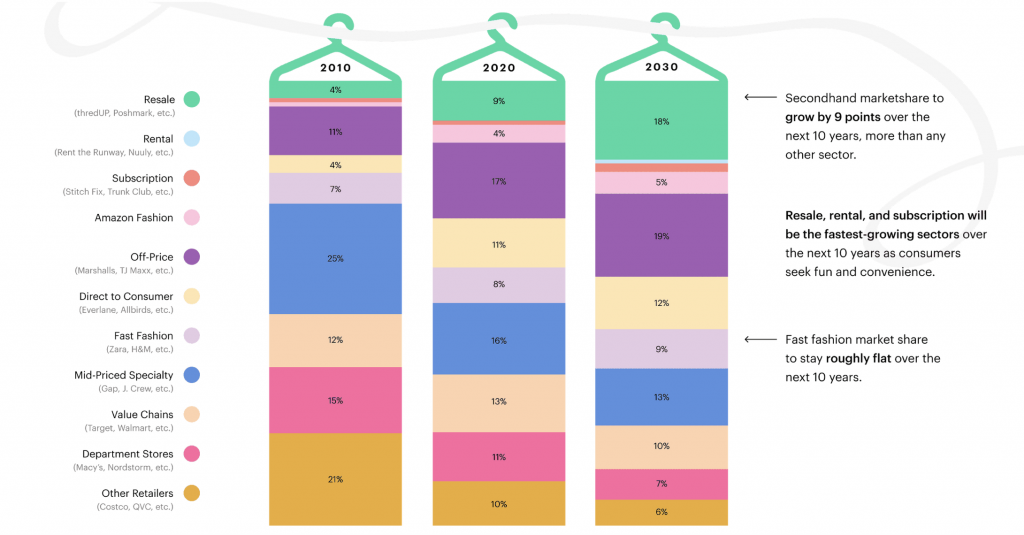
Specifically addressing the shift from fast fashion to pre-owned fashion, a market that is expected to be 2 times bigger than fast fashion by 2030, ThredUp’s report reveals that almost 2 in 5 consumers that are already buying pre-owned apparel say they are “replacing fast fashion purchases with secondhand clothing,” which may be helped along by the fact that 1 in 4 say that they “care less about wearing the latest trends than [they did] before the pandemic” and 1 in 2 say that “saving money on clothes is now their top priority.”
As for the role that Gen-Z consumers play in the overarching growth of the resale segment, ThredUp contends that this younger generation simply has “more circular fashion habits” than older generations. For instance, Gen-Z consumers are 165 percent more likely than their Baby Boomer counterparts to “consider the resale value of clothing before buying it,” which is something that luxury resale sites like The RealReal have stated in the past in connection with handbags and other goods. They are also 83 percent more likely to view apparel ownership as “temporary,” and thus, subject to multiple ownership turnovers in furtherance of the larger sharing economy.
In one of its most striking observations, the resale giant’s report states that over the next 5 years, consumers are slated to prioritize secondhand apparel over new clothing that is marketed as “sustainable.” In this vein, 42 percent of consumers say that they plan to spend more on secondhand clothing versus the 26 percent that plan to spend more on new “sustainable” wares, as well as those marketed as “inclusive” and “transparent,” which is 40 percent fewer than 2019. This interesting shift is likely a reflection of the cost difference between pre-owned clothing and “sustainable” wares, the latter of which tend to be quite a bit more expensive.
Beyond that, it is also likely a response to rising consumer awareness about that widespread greenwashing that has been (and continue to be) carried out by brands as a marketing gimmick. At the same time, the shift away from “sustainable” marketing almost certainly follows from the overuse of buzzwords like “sustainability,” which have caused consumer confusion as to what such terms actually mean and whether there is really merit to such claims in many cases.
The ThredUp report also highlights the “emerging growth channel” that is resale, particularly in light of the fact that 43 percent of consumers say they are more likely to shop with a brand that lets them trade in old clothes for brand credit, and 34 percent say they are more likely to shop with a brand that offers secondhand clothing alongside new.The company notes that 1 in 3 retail executives say that resale is becoming an essential element of business in order to meet customer expectations, with 42 percent stating that resale “will be an important part of their business within 5 years.” This is reflected in the reasons why brands are looking to the resale space, namely, to acquire more customers, attract younger customers, and to stay relevant, while, of course, driving revenue and operating more sustainably.
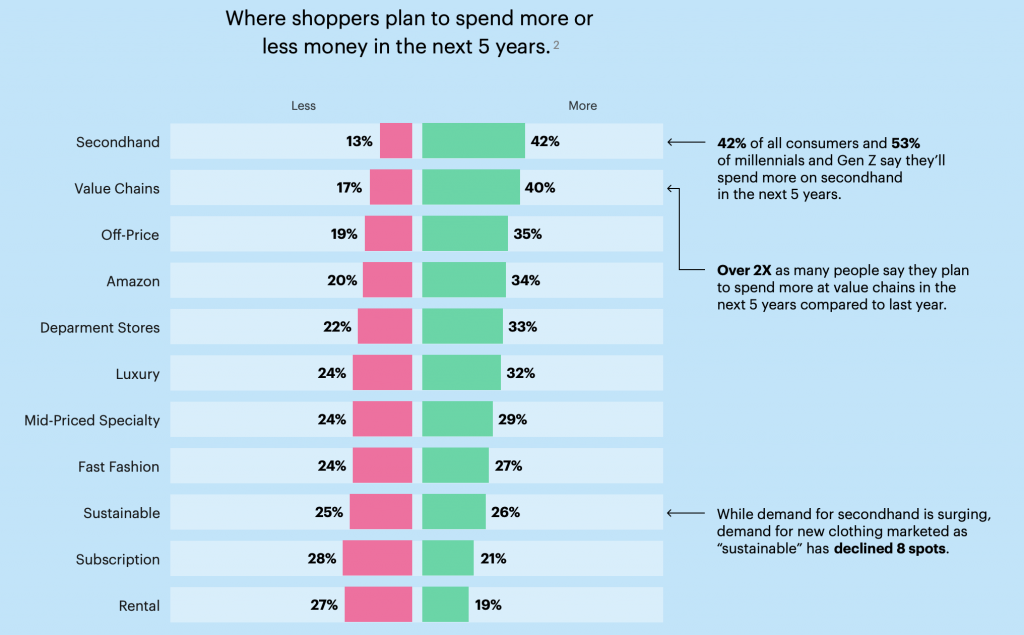
Against this background, ThredUp notes that brands are “barely scratching the surface of resale’s potential impact,” with pre-owned garments accounting for less than 1 percent of the total apparel volume sold by retailers that have launched resale shops.
Finally, on the regulation front, ThredUp found that policy incentives could drive meaningful adoption of circular fashion, as 53 percent of fashion executives saying that they would be “more likely to test resale if there were financial incentives for doing so” and 47 percent of consumers revealing that they would be “more inclined to purchase secondhand clothing if there was no sales tax or they received a tax credit.” As for examples of how government can “enable resale to reach its environmental impact potential,” ThredUp proposes removing sales tax for consumers or providing tax credit on secondhand purchases, giving tax deductions for brands with certified resale programs, requiring clothing to be discarded responsibly by consumers, and requiring retailers to reuse returns.
Reflecting on these findings as a while, Neil Saunders, Managing Director of GlobalData, stated that “retailers recognize this shift, which is why so many of them are now looking to get into resale,” making resale what he calls “the most dynamic and fast-paced part of the apparel market over the next decade.”




